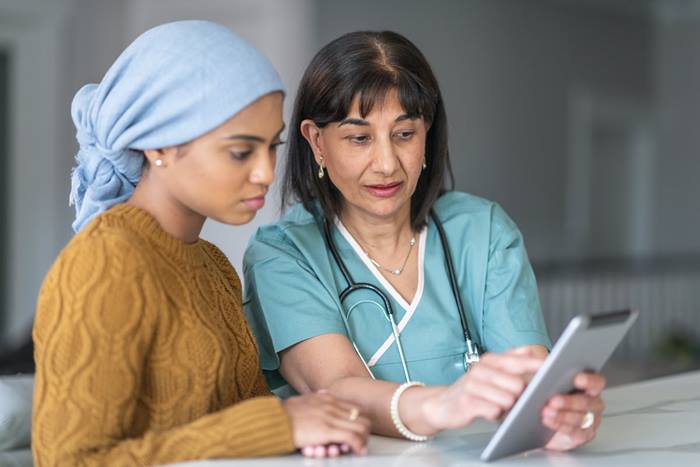















- Locations
- United States
- US Blogs
- Virtual Care: More Confident Decisions, Better Outcomes
In an article on Healthcare Dive, I wrote about gaps and risks that could hinder broader and more effective use of telemedicine, particularly since the advent of the COVID-19 pandemic. In this post, I will explore opportunities to use data and technology solutions to help close those gaps and effectively enable virtual care.
If you’ve had a clinical encounter in the past few years, you know that healthcare practices are using more technology than ever. In fact, these days, your provider may type on her laptop or tap on his tablet while interacting with you – even during an in-person office visit.
Finding new and better ways to use data and technology is not just about facilitating safer, more effective remote visits. It’s also about gaining greater visibility into a patient’s clinical and social information, extending patient engagement well beyond the confines of a visit, enabling more confident diagnostic and treatment decisions, and – ultimately – supporting better outcomes.
Those are important goals no matter how a visit is conducted – and new approaches to data and technology will be critical enablers.
Let’s consider some of the powerful ways data and technology can reshape patient care and population health management.
- A patient with chronic health conditions wears a connected device on her wrist. The wearable device monitors her pulse and activity level. It captures that data and automatically shares it with her primary care physician. When the patient visits her doctor – remotely or in the office – the PCP can call upon the data. Thanks to advanced analytics powered by machine learning, the physician has access to more than raw data. For instance, he may also receive an alert about an alarming trend in the patient’s heart rate, along with a suggestion of follow-up questions and possible tests to order.
- Another patient lives in a rural area and does not always have access to transportation to appointments with his cardiologist. Telemedicine visits have dramatically improved his access not only to cardiac care but also to other specialties. The availability of connected cardiac monitors has enabled this rural patient to perform routine tests on his own. The medical devices transmit data to his cardiologist, providing the detailed insights needed to confidently make medication adjustments.
- A psychiatrist is extremely busy treating patients in an area with high demand for behavioral health services but low supply of professionals. By using data and technology to automate many of her clinical and operational workflows, the psychiatrist has been able to delegate much of the upfront triage work to nurses and other physician extenders. She is now able to meet the needs of more patients while practicing at the top of her license.
Technologies to bring these scenarios to life are here today. By combining connected smart medical devices and patient wearables, performing remote monitoring, and putting artificial intelligence to work, we can deliver virtual care that delivers real results for patients and providers.
To learn more about the art of the possible, I encourage you to download our new eBook, Telehealth transformation: Moving from crisis response to population health solutions. When you’re ready to explore the opportunities available to your organization, please get in touch.





